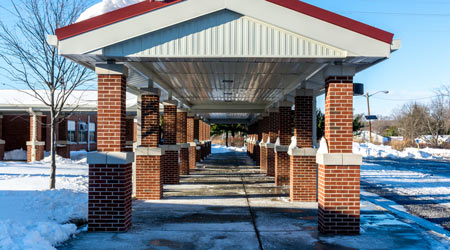
In many areas of the United States, colder weather means spending more time indoors, making indoor air quality (IAQ) even more of a concern. On average, schools are more crowded than many other indoor spaces — they often have four times the population density of a typical office — and they house a larger proportion of children.
Good IAQ is an important component of a healthy indoor environment and can improve students’ health. Critical for healthy IAQ in schools are quality design, operation and maintenance of heating, ventilation and air conditioning (HVAC) systems.
Properly functioning HVAC systems provide adequate ventilation, control temperature and humidity to provide thermal comfort, control odors, and reduce the pollutants that cause most IAQ problems inside school buildings. Regular HVAC maintenance helps save energy and improve occupant health and performance.
In preparation for winter, the Environmental Protection Agency offers these six tips to prepare HVAC systems:
• Clear exterior HVAC systems of ice or snow; clean interior HVAC elements on a regular schedule. Poorly maintained HVAC units can lead to IAQ problems, including mold issues. Microbial growth in drip pans, ductwork, coils and humidifiers can both disrupt the HVAC system and affect building occupants’ health.
• As temperatures fall, maintain indoor humidity levels. As the temperature outdoors drops, schools should be aware of indoor humidity levels. To protect occupant health and comfort as well as the school building and its facilities, indoor relative humidity should be maintained above 30 percent—ideally between 30 percent and 50 percent.
• Ensure air filters are changed on a regular schedule. Air filters should have a dust-spot rating between 35 percent and 80 percent or a minimum efficiency rating value (MERV) between 8 and 13, depending on the compatibility of the air handling unit. The higher the MERV rating, the more particulates will be filtered, resulting in cleaner air.
• Adjust HVAC operation for fall or winter conditions as needed to ensure proper ventilation. Provide outdoor air ventilation according to ASHRAE standards or local code. There are significant spatial and seasonal variations in the volume of air delivered by most HVAC systems, so systems may need to be adjusted. Learn more by checking out the ASHRAE Standard 62-2016.
• Adjust your maintenance schedule to take holidays into account. To ensure that HVAC systems are functioning properly over winter and holiday breaks, consider creating a holiday maintenance schedule. With intermittent building occupancy over breaks, outdoor air ventilation rates may need to be adjusted. Check that air registers are not inadvertently obstructed by furniture or large objects that may have been moved.
• Activate the frost control option on Energy Recovery Ventilation (ERVs) systems as appropriate. Be wary of frost. In colder climates, some operating conditions can cause freezing within the energy recovery heat exchanger, and it is often necessary to equip energy-recovery ventilator (ERV) systems with a frost control option.

 The Down and Dirty on Cleaning in Virus Season
The Down and Dirty on Cleaning in Virus Season How Surfactant Use is Expanding in Commercial Cleaning
How Surfactant Use is Expanding in Commercial Cleaning Operational Excellence Series 2025: Better Budgeting
Operational Excellence Series 2025: Better Budgeting